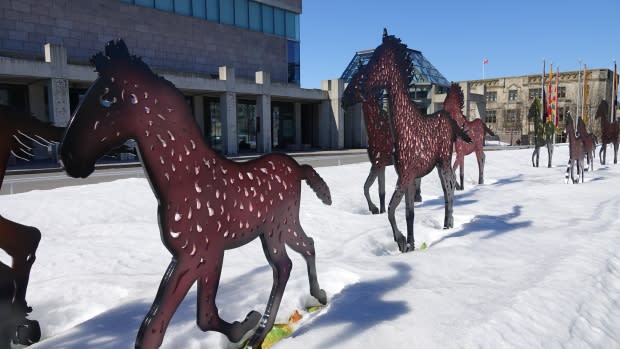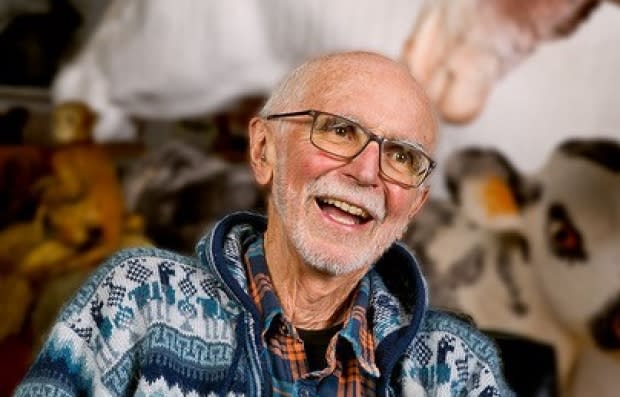How Joe Fafard's legacy is living on in Ottawa
Even if you've never been inside the National Gallery of Canada, you would have seen Joe Fafard's work just from passing by the building.
The Saskatchewan born artist — who died last week — sculpted a series of aluminum horses that run alongside the gallery building on Sussex Drive.
The horses were first shown at the gallery in 2008 as part of a larger exhibition of Fafard's work. But Josée Drouin-Brisebois, the gallery's senior curator of contemporary art, said the horses stood out.

"When we first showed it in the gallery it was quite interesting to me to think about bringing horses inside the gallery and how it could make the space much more dynamic," she told CBC Radio's Ottawa Morning.
The gallery bought the sculptures and began displaying them outside for all to see. But there were a few complications with the original design.
The sculptures were initially made out of steel and began to rust after being out all year, according to the gallery's head of conservation Stephen Gritt.
"[Fafard] was always pushing his boundaries and the boundaries of the materials," Gritt told CBC Radio's Ottawa Morning.
Eventually the sculptures needed to be restored and initially a decision was made to display the horses for only part of the year.
But that didn't fly with fans of the sculptures who wanted to see them displayed year round, Gritt said.
"The public said 'No! We don't really want that.' So we had lots of letters and lots of comments."
Fafard agreed to make another set made out of aluminum that could withstand the elements all year. That same set is still being displayed outside the gallery.
Inspiration for Canadian artists
According to a biography on the Slate Fine Art Gallery website, Fafard was born to French-Canadian parents in the rural community of Ste. Marthe, Sask., near the Manitoba border.
Fafard continued to make his home in the prairie province, something that Drouin-Brisebois said serves as an inspiration to Canadian artists.
"I think it shows that you don't have to leave Canada, I think it's important to think about where you're from and what you want to convey."
Fafard drew inspiration from his surroundings, Drouin-Brisebois said. Growing up on a farm it only made sense that horses were his favourite subject.

"Thinking about the works we have in the collection ... these were portraits. They were the personality of those horses," she said.
But Fafard was so much more than his work, Gritt said.
"You cannot help but like Joe Fafard. There's no one who's met him who doesn't like him."
Gritt pointed to the statement released by Fafard's family after his death, which said he passed "with a twinkle in his eye."
"That's absolutely Joe Fafard," Gritt said.

